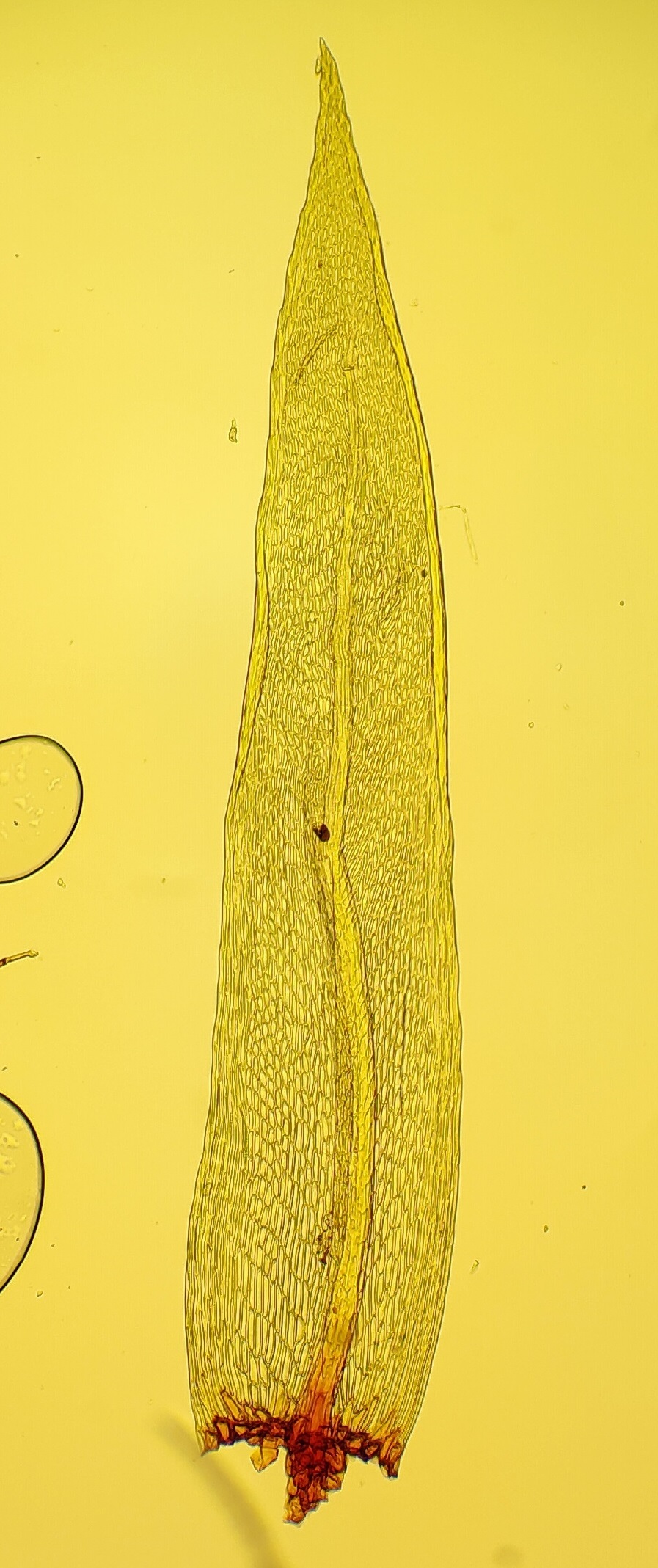Daltonia
Autoicous, synoicous or dioicous (not in Victoria). Asexual reproduction occasionally by fusiform, orange gemmae produced on the leaf surface or in leaf axils. Tufts on trees, often twigs, and logs (not in Victoria). Stems erect, simple or branched, tomentose usually along most of length; central strand absent. Leaves narrowly oblong to lanceolate or linear-lanceolate, rarely spathulate (not in Victoria), symmetric, monomorphic, arranged around stem and facing all directions, erect or erect-spreading when moist, scarcely altered, contorted or spirally twisted around stem when dry; apex acute to acuminate, rarely rounded (not in Victoria), without a hairpoint; costa single, extending into the apical quarter of leaf; margins entire, plane to revolute, with a border of more elongate cells; laminal cells elliptic, rhomboidal or hexagonal, becoming more elongate toward base, smooth. Seta smooth (not in Victoria) or scabrous toward capsule. Capsule erect or inclined, symmetric, ovoid, obolid, ellipsoid or cylindric (not in Victoria), smooth when dry, without an annulus. Calyptra mitrate, smooth (not in Victoria) or rough near apex, with a fringed base. Operculum rostrate. Peristome double; endostome with segments equal in height to exostome teeth, without a basal membrane or basal membrane low; cilia absent.
Twenty-four species (Yu et al. 2010; Ho et al. 2012) scattered throughout most tropical to temperate regions; one species in Victoria.
 Spinning
SpinningHo, B.-C.; Pokorny, L.; Tan, B.C.; Frahm, J.-P.; Shaw, A.J.; Quandt, D. (2012). Molecular evolution and diversification of the moss family Daltoniaceae (Hookeriales, Bryophyta) with emphasis on the unravelling of the phylogeny of Distichophyllum and its allies. Botanical Journal of the Linnean Society 170: 157–175.
Yu, J.; Devos, N.; Majestyk, P.; Shaw, A.J. (2010). Intercontinentally disjunct species are derived rather than relictual in the moss genus Daltonia (Bryophyta). Taxon 59: 459–465.


